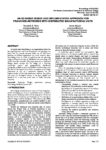
|
An Ad Based Design and Implementation Approach for Franchise-Networks with Distributed Manufacturing Units
Matt, Dominik T., Erwin Rauch
7th International Conference on Axiomatic Design, 2013
In recent years franchising as an organizational form has been gaining more and more importance and growing even faster than the overall economy. While we can find many business or juridical approaches and much research about franchising, there is a lack of guidelines for the planning, design and implementation of distributed manufacturing units within franchise networks. This paper presents an Axiomatic Design based concept for the design of a franchise production system with geographically distributed, changeable, scalable as well as replicable manufacturing units. The aim of this research is to derive a complete set of design parameters as well as a systematic approach for the implementation of franchise production systems. To validate and prove the developed concept it has been applied and illustrated in a real case study with an Italian franchise company.
|
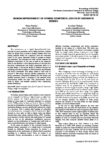
|
Design Improvement of Hybrid Composite Joints by Axiomatic Design
Ouellet, Marc and Aurelian Vadean
7th International Conference on Axiomatic Design, 2013
The performance of a hybrid (bolted/bonded) joint depends on many parameters and its design becomes complex when the design aims to create a synergy between these two joining methods which are commonly used for composite plates. In this paper, Axiomatic Design is applied to analyze the parameters that influence the load transfer between the different components of the joint as well as the maximum stress in the adhesive. A first decomposition of the joint into functional requirements and design parameters leads to a coupled design. A decoupled design is obtained through the reordering and reformulation of both functional requirements and design parameters. The design matrix is then used to propose a new design through physical integration of the design parameters. Comparison between this new design and baseline geometry shows a reduction in the maximal stress concentration inside the joint. This improvement should result in higher load transfer capability while maintaining similar dimensions.
|
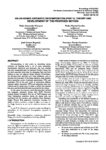
|
Value-Based Axiomatic Decomposition (Part I): Theory and Development of the Proposed Method
Marques, Pedro Alexandre, Requeijo, Saraiva, and Guerreiro
7th International Conference on Axiomatic Design, 2013
Decomposition is very useful in simplifying design problems, by breaking down a set of goals, constraints, requirements, behaviours and structures, into less complex and more manageable ways. In Axiomatic Design Theory, this top-down approach takes place by zigzagging back and forth between at least two adjacent design domains. Nevertheless, the decomposition activities pose some challenges, such as assuring the consistency of the design decisions made between levels, generating proper functional requirements (FRs) and constraints (Cs) at the lower levels of abstraction, defining adequate design parameters (DPs) and integrating them into physical and/or logical parts, in order to achieve the required functions and the desired life cycle properties for the system.
|
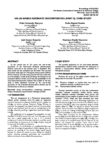
|
Value-Based Axiomatic Decomposition (Part II): Case Study
Marques, Pedro Alexandre, Requeijo, Saraiva, and Guerreiro
7th International Conference on Axiomatic Design, 2013
In the second part of this paper, the step-by-step application of the value-based axiomatic decomposition method, proposed in the previous part, is illustrated. The main results are also presented and discussed. The practical application took place at a Portuguese transportation delivery service company. The two main goals for this case study were to assist managers in their decisions during the redesign of the company’s delivery service, and to test the applicability of the value-based decomposition method. The context of the case study is firstly explained, followed by the step-by-step application of the proposed decomposition method, and by the discussion of the results obtained.
|
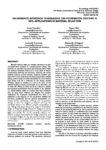
|
An Axiomatic Approach to Managing the Information Content in QFD: Applications in Material Selection
Cavallini, Carlo, Citti, Costanzo, and Giorgetti
7th International Conference on Axiomatic Design, 2013
Material selection takes on a strategic importance to meet the highest level standard of a product/process design. The evolution of legislative, regulatory and functional needs makes this selection extremely complex as it is the result of several compromises involving the consumer. Choosing the wrong material produces product failures, reliability problems and high costs. On the other hand, the many compromises needed during product design are often responsible for a non-optimal final design and for a reduction in the design process efficiency (delays in schedule or a rise in the cost). In the material selection process, the designer has to deal with a lot of trade-offs. These are often caused by a failure to identify the functional specifications that are related to the materials (i.e. limited weight, ability to conduct heat, wear resistance, etc.). In many cases, however, the designer has correctly understood the functional specifications but there is a deficiency in the mapping of the connections between the functional specification and the physical characteristics (i.e. density, thermal conductivity, hardness, etc.). A systematic strategy to drive the designer to discover and map the correlation between the different physical characteristics is also missing. This paper shows how, using the Information Axiom of Axiomatic Design Theory, the designer can clearly define the functional specifications as functional requirements (FRs) and identify the mutual correlation between the different physical characteristics (the design parameters used in Axiomatic Design). In this way, material selection during the development of new product can be made more effective and innovative.
|
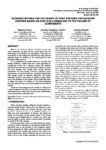
|
Decision Criteria for the Design of HVAC Systems for Datacom Centres Based On Cost and Losses Due To the Failure of Components
Cavique, Miguel, Gonçalves-Coelho, and Mourão
7th International Conference on Axiomatic Design, 2013
Most of the times, the high-level decision process uses scarce knowledge and data, but has a huge impact over the entire design of an artefact or an organization. This paper is a contribution to help making the best decision, using only the expected ranges of variation of the requirements for each alternative design solution. As an application, this study focuses on the high-level decision between a chilled water and a direct expansion air conditioning system for a datacom centre. The decision depends on the cost and on the likelihood of failure, assuming that both systems have suitable basic cooling function performance. On the contrary to what is specified in most applications, cost applies herein for a functional requirement with specific ranges of variation. Moreover, one applies Axiomatic Design to the process of decision making, rather than to the definition of the artefact. The collected data helps to define the ranges of variation of the afore-mentioned functions, which are the only records needed for the decision process.
|

|
Design Parameter Selection for Rectangular Design Matrices
Benavides, Efrén M. and Joan B. Rodríguez
7th International Conference on Axiomatic Design, 2013
Design matrices that are derived from physical laws are, in general, rectangular matrices with a larger number of design parameters than functional requirements. This paper explores some algebraic properties of such matrices and uses them in order to find a diagonal square matrix, which is the ideal design required by the Independence and Information Axioms. Based on these properties, a measure of the distance to the ideal design is proposed. Uncoupled, decoupled and coupled design matrices are explored. Finally, a rule for selecting the best design parameters for achieving a square relationships that are embedded in the ideal design cannot always be implemented as a physical solution or device. In general, the result is a design that must satisfy r functional requirements and that have q with q r design parameters.
|
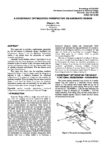
|
A Constraint Optimization Perspective on Axiomatic Design
Oh, Hilario L.
7th International Conference on Axiomatic Design, 2013
This paper aims to provide a mathematical perspective for the two axioms in Axiomatic Design. Specifically, the Independence Axiom 1 and the Minimum Information Axiom 2 are viewed from the perspective of equality constraint optimization. Axiomatic Design declares Axiom 1 and Axiom 2 to be axiomatic; that they cannot be proven nor derived from other principles or laws of nature. In fact, this paper shows that the concept and implementation of the two axioms parallel those of equality constraint optimization. The two axioms could have been derived from it. This paper also shows that the qualifying condition imposed by Axiom 1 that the design matrix be triangular or diagonal is only a sufficient condition for functional independence. It is subset of a larger set that satisfies the necessary condition. Thus, the design that has been allowed by Axiom 1 and found by Axiom 2 to have the minimum information content may not necessarily be the design with minimum information content among the larger set.
|
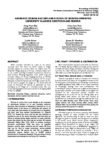
|
Axiomatic Design and Implementation of Service-Oriented University Classes: Emotions and Senses
Sang Yoon Bae, Jukrin Moon, Chan-Eon Park, and James R. Morrison
7th International Conference on Axiomatic Design, 2013
While university education is a part of the service economy, there have been no formal efforts to design university classes as a service. Here we embark upon the Axiomatic Design process to develop university classes with an eye toward including functional requirements found in other services. Drawing inspiration from world renowned university classes and deeply engaging services, we identify functional requirements related to emotions and the senses. Prototype functional requirements and design parameters that can be used to support the design of any service-oriented course are developed. We discuss the application of these prototypes to the design of a university course. The new course is being implemented and evaluated in the Spring 2013 semester at KAIST.
|

|
Knowledge Services in Campus: The Application of Axiomatic Design
Hao, Yuqiuge, Jussi Kantola, Rubén Raúl Valverde Arenas, and Mingzhang Wu
7th International Conference on Axiomatic Design, 2013
Knowledge is the intellectual capital of a university. In this knowledge intensive environment, it is very important to consider the knowledge capture and its application to solve practical problems. Knowledge services (KS) is a new concept which comes on the scene to put knowledge management (KM) into practice. KS refers to a boarder concept that covers information and knowledge management. In this paper, we will present the KS in a university setting. KS stimulates information sharing within one university and thus improves university performance. It helps the knowledge producers and receivers to cease working vertically, and collaborate with each other instead. Hereby, we propose a tool namely “Knowledge board” to achieve KS and support the knowledge sharing. The implementation of an efficient tool can assist the decision making process for the three main activities of a university: teaching, research, and cooperation and also the activities in general purpose. It can be used to plan future research activities, support teaching activities and reduce administration costs. This knowledge board is designed and realized based on Axiomatic Design (AD) principles. A case study is conducted to exemplify the process of using AD to design knowledge services within a university environment.
|
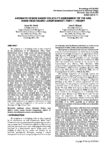
|
Axiomatic Design Based Volatility Assessment of the Abu Dhabi Healthcare Labor Market: Part I – Theory
Farid, Amro M. and Inas S. Khayal
7th International Conference on Axiomatic Design, 2013
The progress of a developing nation is often measured by the advancement of its infrastructure. While “hard” infrastructure such as water, power and transportation are often easy to assess, “soft” structures such as healthcare systems are often more challenging. Furthermore, the quality and reliability of a nation’s healthcare system is often driven by the number and diversity of its healthcare professionals. Unfortunately many developing nations often suffer from very constrained segments in their highly skilled labor market and hence must “import” this human capital. Volatility in key healthcare professions can threaten reliable and sustainable healthcare delivery. In this two-part paper, the Axiomatic Design large flexible system modelling framework is used to assess healthcare delivery capability in Abu Dhabi, United Arab Emirates. Part I provides the methodological developments. Here, each profession type is modelled as a functional requirement and the physical hierarchy is modelled at three levels of decomposition: individuals, healthcare facilities, and regions. The associated knowledge base is filled with the associated number of professionals of a given type provided by the corresponding design parameters. The knowledge base is then evolved on a yearly basis as professionals enter, stay and ultimately leave. In Part II, the Abu Dhabi case study shows results indicative of significant volatility in the healthcare labor market. The work demonstrates that Axiomatic Design Theory as applied to large flexible systems can be applied to data-centric methods in human resources management in the context of skills shortages and high attrition rates.
|
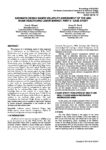
|
Axiomatic Design Based Volatility Assessment of the Abu Dhabi Healthcare Labor Market: Part II – Case Study
Farid, Amro M. and Inas S. Khayal
7th International Conference on Axiomatic Design, 2013
The progress of a developing nation is often measured by the advancement of its infrastructure. While “hard” infrastructure such as water, power and transportation are often easy to assess, “soft” structures such as healthcare systems are often more challenging. Furthermore, the quality and reliability of a nation’s healthcare system is often driven by the number and diversity of its healthcare professionals. Unfortunately many developing nations often suffer from very constrained segments in their highly skilled labor market and hence must “import” this human capital. Volatility in key healthcare professions can threaten reliable and sustainable healthcare delivery. In this two-part paper, the large flexible system modelling framework from Axiomatic Design Theory is used to assess healthcare delivery capability in Abu Dhabi, United Arab Emirates. Part I provides the methodological developments. Here, each profession type is modelled as a functional requirement and the physical hierarchy is modelled at three levels of decomposition: individuals, healthcare facilities, and regions. The associated knowledge base is filled with the associated number of professionals of a given type provided by the corresponding design parameters. The knowledge base is then evolved on a yearly basis as professionals enter, stay and ultimately leave. In Part II, the Abu Dhabi case study shows results indicative of significant volatility in the healthcare labor market. The work demonstrates that Axiomatic Design Theory as applied to large flexible systems can be applied to data-centric methods in human resources management in the context of skills shortages and high attrition rates.
|
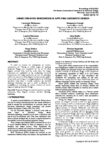
|
Using Creative Resources in Applying Axiomatic Design
Slătineanu, Coteaţă, Gherman, Beşliu, Dodun, and Seghedin
7th International Conference on Axiomatic Design, 2013
In order to increase the participation of creative components of thinking in certain stages of applying Axiomatic Design, one considered the use of the ideas diagram method. This could be made when the design parameters are established or by establishing functional requirements and design parameters so that the principles valid in the case of the ideas diagram method may be applied. A case study concerning a technological solution of detaching cylindrical parts from a metallic workpiece by electrical discharge machining was used in order to illustrate the possibilities of increasing the creative character of certain stages of applying Axiomatic Design.
|
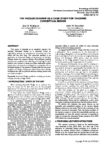
|
The Vacuum Cleaner as a Case Study for Teaching Conceptual Design
Rodríguez, Joan B. and Efrén M. Benavides
7th International Conference on Axiomatic Design, 2013
This paper is intended as an academic example for teaching Axiomatic Design in a trimestral course to engineering students or practitioners connecting with the theory for the first time. The proposed example is an application of Axiomatic Design to the selection of the best filtering system for vacuum-cleaning. Two different physical solutions are considered for collecting and retaining the solid particles: first solution is based on a filter media with a given porous size, and second one is based on a separation due to the larger density of the particles. Physical laws for both cases are given and design matrices are derived from them. Finally, the axioms are used to guide the decision making process and conclusions are given.
|
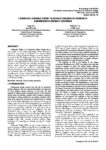
|
Lessons Learned From Teaching Axiomatic Design in Engineering Design Courses
Liu, Ang, and Stephen Lu
7th International Conference on Axiomatic Design, 2013
Axiomatic Design is an important design theory that is often taught in many engineering design courses. This paper presents a case study to summarize our various lessons learned of teaching Axiomatic Design in practice. Based on the study of 30 team design projects that were collected from a graduate level engineering design course, we observed some common challenges/difficulties that student designers often encounter when learning and practicing Axiomatic Design Theory. These lessons are organized according to their relevance to several key concepts in Axiomatic Design: domains, hierarchy, the zigzagging process, the design axioms, and constraints. For each practical challenge/difficulty, we prescribe some relevant theoretical foundations and related design methods to facilitate the understanding and practice of the Axiomatic Design.
|
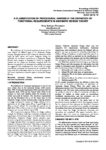
|
A Classification of Procedural Errors in the Definition of Functional Requirements in Axiomatic Design Theory
Thompson, Mary Kathryn
7th International Conference on Axiomatic Design, 2013
The definition of functional requirements is one of the most critical and difficult steps in the Axiomatic Design process. This paper presents five classes of procedural errors made by both novice and expert designers during the definition of functional requirements in Axiomatic Design Theory. Each category is described in detail, the linguistic markers for the errors are identified, examples from the literature are provided, and strategies for avoiding these errors are suggested. The implications of these errors for design practitioners, educators, and researchers are considered. The paper ends with a discussion about the nature of requirements and future requirements research topics in Axiomatic Design Theory.
|
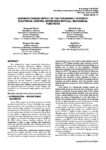
|
Axiomatic Design Aspect of the Fukushima-1 Accident: Electrical Control Interferes With All Mechanical Functions
Nakao, Masayuki, Kensuke Tsuchiya, and Kenji Iino
7th International Conference on Axiomatic Design, 2013
The independence axiom recommends independence among all functional requirements. Modern machines, however, are all driven by electrical power and follow commands from computers with algorithms dependent on instrumentation signals; electrical functions interfere with all mechanical functional requirements. Moreover, a typical machine loses its entire function when its single electrical system fails. The Fukushima-1 accident followed this exact scenario; the tsunami destroyed all power supplies and switchboards, then all pumps and valves turned inoperable from the control room. Delayed counteractions led to a loss of cooling functions and eventually to core damage. This interference is a fundamental design problem with modern machines.
|
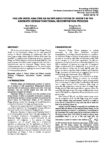
|
Failure Mode Analysis as an Implementation of Axiom 2 in the Axiomatic Design Functional Decomposition Process
Pallaver, Matt, and Sung-hee Do
7th International Conference on Axiomatic Design, 2013
Of the two central axioms of Axiomatic Design Theory, Axiom 2, the Information Axiom, is the more powerful concept in directly addressing the performance issue that most plagues design efforts: product failures. Prior work has described a complementary relationship between Axiomatic Design and Failure Modes and Effects Analysis (FMEA). This paper proposes that failure mode analysis is more than just a complementary tool to Axiomatic Design. Failure mode analysis processes are an embodiment of the second axiom and a practical method of applying the second axiom during the decomposition process.
|
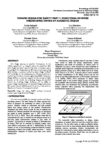
|
Toward Design for Safety Part 1: Functional Reverse Engineering Driven By Axiomatic Design
Sadeghi, Leyla, Luc Mathieu, Nicolas Tricot, Lama Al-Bassit, and Rima Ghemraoui
7th International Conference on Axiomatic Design, 2013
The design process of product development is the earliest opportunity to integrate safety into products. The term ‘design for safety’ captures this effort to integrate safety knowledge in the design process. Whereas, reverse engineering (RE) has been a common method to obtain design feedback and knowledge of the existing system, this paper presents a method for functional reverse engineering (FRE). Axiomatic Design (AD) is an attractive support for the concept of FRE because of its criteria for evaluating designs, its standard format for recording design decisions, and its ability to present design requirements and associated design parameters. The power take-off (PTO) system is used as a case study to illustrate and examine the proposed method.
|

|
Toward Design for Safety Part 2: Functional Re-Engineering Using Axiomatic Design and FMEA
Sadeghi, Leyla, Luc Mathieu, Nicolas Tricot, Lama Al-Bassit, and Rima Ghemraoui
7th International Conference on Axiomatic Design, 2013
The design process of product development is the earliest opportunity to integrate safety into the product. The term ‘design for safety’ captures this effort to integrate the safety knowledge in the design process. In this context, this research suggests to do ‘design for safety’ through two sequential methods in two parts. In the first part a method for functional reverse engineering (FRE) driven by Axiomatic Design (AD) was proposed. The second part, discussed in this paper, proposes a functional re-engineering (FR2E) using AD and failure mode and effect analysis (FMEA) to define a system with high mechanical safety as well as reliability and robustness. This method is validated through a case study that examines a power take-off (PTO) system.
|
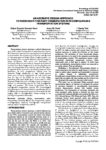
|
An Axiomatic Design Approach to Passenger Itinerary Enumeration in Reconfigurable Transportation Systems
Edgar Eugenio Samano Baca, Amro M. Farid, and I-Tsung Tsai
7th International Conference on Axiomatic Design, 2013
Transportation systems represent a critical infrastructure upon which nations’ economies and national security depend. As infrastructure systems, they must be planned and operated to accommodate the uncertain and continually evolving needs of their passengers and freight. These changes represent not just changes in state – or system behavior – but also changes in system architecture. New routes and destinations are continually added and new modes of transport are introduced to realize them. Such changes occur in the planning time scale when the transportation is intentionally expanded, but also in the operational time scale when, for example, buses and trains breakdown. As such, transportation systems meet the Axiomatic Design classification of large flexible systems where many functional requirements not only evolve over time, but also can be fulfilled by one or more design parameters. This paper builds upon a recent work in which Axiomatic Design was used to develop a theory of degrees of freedom in manufacturing systems for their reconfigurable design and operation. The theory is specialized here to reconfigurable transportation systems. The methodological developments are then demonstrated on a small subsection of the Mexico City transportation system to demonstrate its wide ranging utility in reconfigurability decision-making at the planning and operations time scales.
|
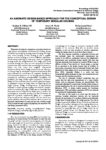
|
An Axiomatic Design Based Approach for the Conceptual Design of Temporary Modular Housing
Gilbert III, Lindsey R., Amro M. Farid, and Mohammed Omar
7th International Conference on Axiomatic Design, 2013
Temporary housing has emerged as a practical solution to a plethora of contemporary circumstances, including, though not limited to, emergency housing, worker housing, and large-scale events housing. Interim housing is also a possible solution to future housing on lunar and Martian expeditions. Unfortunately, achieving the short-term nature of temporary housing is less than straightforward. One design pitfall leads to scanty housing that does not meet occupants’ functional requirements, while another leads to overdesigned, permanent homes that may evolve into unsightly unstructured settlements. Thus, current design practices may not fully meet the diverse range of stakeholder requirements adequately. This paper addresses the central issue of temporary housing as a non-functional requirement on the housing system’s lifecycle properties of modularity, reconfigurability, extensibility, and reusability. The large flexible system proposed in Axiomatic Design and the modularity found in product platforms impact the proposed conceptual design from the beginning of the design process. Design interdependence is systematically addressed to avoid needless coupling and maximize cohesion within the modules. The large flexible system knowledge base framework and the Independence Axiom serve to achieve the central goal of temporary housing. The first illuminates the high-level functional requirements (FRs) of a temporary house as well as the common module unit that serves as a product platform with standard interfaces. Next, to ensure the functional requirements for each unit are met, a design matrix (DM) is made for each module highlighting the respective FRs and design parameters (DPs).
|
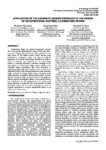
|
Application of the Axiomatic Design Approach to the Design of Architectural Systems: A Literature Review
Marchesi, Marianna, Sang-Gook Kim, and Dominik T. Matt
7th International Conference on Axiomatic Design, 2013
Architectural design has become increasingly complex due to the global environmental, energy issues, and socio- economic changes. Key parameters well considered in the early phase of the design process would provide good performance, competitive costs, and close-to-envisioned appearance of the built environment. Therefore, in order to reduce or minimize the complexity of the entire design process, a systematic approach is required, especially in the early phase of architectural design projects. While many systematic design approaches have been developed in engineering design, little effort has been made in architecture. Axiomatic Design (AD) is distinguished from other systematic design methods by having design axioms that guide good design decisions, especially in the early design phase. The AD approach has basic design principles which can be applied to problem analysis and decision-making. In this paper, a review and classification of AD applications in the architectural design processes is conducted. This study provides an initial framework which will be further developed to create a systemic framework to support architectural design in an efficient and effective way.
|
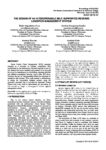
|
The Design of an Interoperable Self-Supported Reverse Logistics Management System
Espadinha-Cruz, Pedro, António Gonçalves-Coelho, António Mourão, and António Grilo
7th International Conference on Axiomatic Design, 2013
Green Supply Chain Management (SCM) strategies emerged as a response to business competition with commitment to the environment. Reverse Logistics is part of this strategy that allows materials and products to be returned for re-use, re-manufacture or re-furbishing, requiring effective and efficient cooperation between supply chain (SC) firms. However, the lack of interoperability affects the alignment of operations with partners. This work presents a methodology to design the cooperation between partners using the systematic approach that is provided by Axiomatic Design Theory and a case study to demonstrate the application of this method to design a self-supported reverse logistics management system.
|
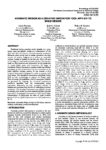
|
Axiomatic Design as a Creative Innovation Tool Applied To Mold Design
Ferreira, Irene, José A. Cabral, and Pedro M. Saraiva
7th International Conference on Axiomatic Design, 2013
Traditional design practices result, typically, in a poor design space exploitation, usually as a consequence of the short lead time and due to technical resources constraints. Moreover, given mostly time to market constraints, the main concern of product designers is to achieve an acceptable solution, instead of looking for the best one. This is the case of the design of mold tools for plastic injection. The injection mold is a high precision tool, responsible for the production of mostly plastic parts used everywhere. Its design is considered critically important to product quality and efficient processing, as well as determinant for the economics of the entire injection molding process. In this context, a fully integrated framework is proposed in order to support mold tools design. This framework encompasses Axiomatic Design (AD) as main methodology to support the Design stage. Thus, following AD guidelines, a few of conceptual solutions are generated by mapping the functional requirements previously identified onto the corresponding design parameters. Afterwards, the best conceptual solution is detailed and optimized with the aim of maximizing customer satisfaction. The developed framework was validated through an existing mold, where the results attained highlight the great potential of the proposed framework to achieve mold design improvements. In particularly, the value of mold solutions generated led to a global improvement on mold performance of 5%.
|
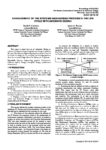
|
Enhancement of the Systems Engineering Process in the Life Cycle with Axiomatic Design
David S. Cochran and Jason A. Barnes
7th International Conference on Axiomatic Design, 2013
This paper is about the use of Axiomatic Design to enhance the Systems Engineering Process during the product life cycle. The Systems Engineering Process must be enhanced to include the design of the enterprise that develops products since the enterprise design affects the efficacy of the process.
|
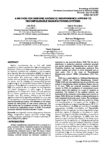
|
A Method for Indexing Axiomatic Independence Applied To Reconfigurable Manufacturing Systems
Puik, Erik, Edwin Smulders, Jan Gerritsen, Bert van Huijgevoort, and Darek Ceglarek
7th International Conference on Axiomatic Design, 2013
Modern manufacturing has to deal with global competition, in which customers have high purchasing power. Production efficiency and rapid response to customer demand are dominant conditions for enterprises to stay successful. Reconfigurable Manufacturing Systems (RMSs) are designed to have a modular architecture in both mechanical design and control system. The architecture enables change of the machine structure quickly, by adding and removing parts of the system, and by changing the corresponding software programming. It can handle short times to market. This paper presents an ‘Index-Method’ to monitor the reconfiguration of RMS. The method is able to categorise the reconfiguration and related development in seven stages. It focusses specifically on the Independence Axiom. The main goal is to find all relevant parameters to cause interactions, and to decouple them. The solution, aiming to be scientifically vigorous and practically applicable, was applied to a true case; the development of a manufacturing system for an inkjet print head for industrial applications. The realisation of the system required the development of new process technology. The index-method may be considered successful. It has the ability to structure the configuration process of RMSs. The method harmonises well with the industry known V-model.
|
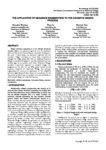
|
The Application of Sequence Enumeration to the Axiomatic Design Process
Woolley, Brandon, Zhen Li, and Derrick Tate
7th International Conference on Axiomatic Design, 2013
Today, software engineering is a well-defined structured discipline. Many new software engineers enter the workforce with a fundamental understanding of a software development life cycle. Unfortunately, new software engineers lack the necessary design techniques to move from requirements through the design phase. The idea of applying Axiomatic Design to software development was first proposed over two decades ago, yet is scarcely used today. Axiomatic Design provides a systematic approach to software design that programs of any size can use. This paper reviews several powerful attributes of Axiomatic Design for software engineering and evaluates the application of the embedded software engineering technique: sequence enumeration. In the case study, we show how to use both concepts seamlessly to yield a proper design for embedded systems.
|

|
Axiomatic Design of Production Systems for Operational Excellence
Arcidiacono, Gabriele and Christopher A. Brown
7th International Conference on Axiomatic Design, 2013
Companies should design unique production systems according to each company’s overall strategy. The production system is the set of methods that transform resources into finished goods and services. To be competitive and profitable, these resources should be appropriately managed. While what is appropriate depends on the company, every organization should be dynamic and adapt to changing market conditions. It is not sufficient to improvise, so it is necessary to structure companies considering all the variables and scenarios. This should guarantee that all the different contexts and situations have been accommodated in the best way. This paper focuses on Axiomatic Design of production systems. Adding global operations optimization to a global manufacturing strategy can provide cost-reduction opportunities and process efficiency. In particular, the paper focuses on building and sustaining the organization and capabilities of the supply chain. At the same time, the paper compares different operational excellence models to balance efforts and advantages.
|
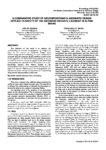
|
A Comparative Study of Decompositions in Axiomatic Design Applied To Safety of the Anterior Cruciate Ligament in Alpine Skiing
Madura, John M. and Christopher A. Brown
7th International Conference on Axiomatic Design, 2013
The objective of this work is to advance the understanding of thematic decomposition of designs for safety in the context of Axiomatic Design. Four different design solutions addressing the same safety-related customer need are compared. Special attention is given to the themes applied in the hierarchical decomposition, as well as the order in which the themes are applied. Good hierarchical decompositions are essential for the development of a well-functioning solution. The themes applied in the decomposition influence the decomposition process, and can impact the solution. Differences in the decompositions and solutions are shown. Finally, the importance of incorporating safety into the decompositions is discussed.
|
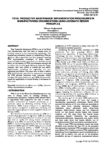
|
Total Productive Maintenance Implementation Procedures in Manufacturing Organizations Using Axiomatic Design Principles
Andemeskel, Filmon
7th International Conference on Axiomatic Design, 2013
Total Productive Maintenance (TPM) is one of the World Class Manufacturing tools that seeks to manage assets by involving everyone in the manufacturing organization. The financial and productivity benefits of implementing TPM are significant. Many approaches have been proposed regarding TPM implementation procedures, of which logically sequenced implementation procedure is an identified success factor; yet the majority of TPM implementation attempts fail to achieve their intended goals. Moreover, Axiomatic Design principles have been proven to provide fast and reliable implementation procedures for engineering and non- engineering applications. This paper aims to assess a reliable TPM implementation procedure by systematically arranging the TPM affiliated parameters using Axiomatic Design principles. The paper presents an open TPM implementation matrix for organizations to further develop in accordance to their needs.
|